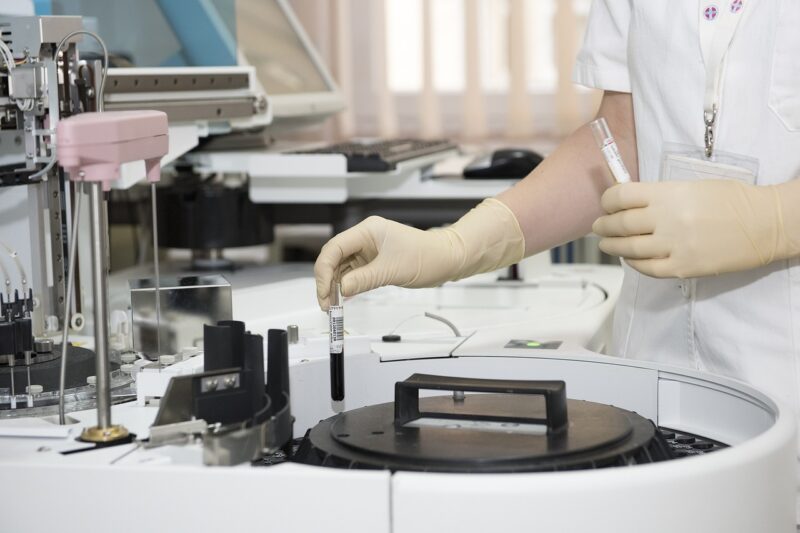Mathematics and Medicine: How Numbers and Equations Help Save Lives
November 12, 2024

Mathematics is often perceived as an abstract collection of theories and formulas, removed from the practicalities of everyday life. However, when it comes to medicine, numbers and equations play a crucial role in saving lives and advancing healthcare. From the moments a patient steps into a clinic to the intricacies of surgical procedures, math is a silent yet profound partner in the medical field. In this article, we’ll explore how mathematics interfaces with medicine, impacting diagnosis, treatment, and patient care.
1. The Role of Statistics in Medicine
Statistical methods are the backbone of medical research, providing the means to summarize data and draw meaningful conclusions. Clinical trials, interventional studies, and epidemiological research rely heavily on statistics to ensure the validity of their findings.
– Clinical Trials: When new drugs or therapies are developed, clinical trials are organized to test their efficacy and safety. Statistical techniques help in designing these trials, determining sample sizes, and analyzing results. A well-designed clinical trial can mean the difference between a breakthrough treatment and a failed experiment.
– Epidemiology: Understanding the spread of diseases relies on statistics to inform public health policies. Mathematicians and biostatisticians use models to predict disease outbreaks and evaluate the effectiveness of interventions. The COVID-19 pandemic highlighted the importance of statistical modeling in forecasting cases and designing responses that save lives.
– Data Analysis: Research studies use statistical techniques to assess data collected from patient records or surveys. The interpretation of this data allows healthcare providers to identify trends, risk factors, and the effectiveness of treatments, leading to improved patient outcomes.
2. Mathematical Modeling in Medicine
Mathematical modeling is another indispensable tool used in medicine. It allows for the simulation of health-related scenarios, facilitating better decision-making and predicting outcomes.
– Disease Progression Models: These models are essential for understanding the dynamics of diseases. For instance, models can track how a chronic disease like diabetes progresses and help clinicians devise personalized treatment plans, enabling timely interventions that improve the quality of life.
– Resource Allocation: Hospitals must manage resources efficiently to provide quality care. Mathematical models can optimize the allocation of staff, equipment, and medication. By simulating different scenarios, hospitals can make informed decisions to minimize waiting times and maximize patient care.
– Surgical Simulations: In surgery, computational models simulate human anatomy and conditions, aiding surgeons in planning complex procedures. By practicing on virtual models, surgeons can enhance their skills and improve their precision during actual operations, resulting in better outcomes for patients.
3. Imaging Techniques and Mathematical Algorithms
Medical imaging relies heavily on mathematics to produce clear and accurate representations of the inside of the human body. Techniques like MRI, CT scans, and ultrasound employ sophisticated algorithms that depend on mathematical principles.
– Magnetic Resonance Imaging (MRI): MRI uses complex mathematical equations to convert the signals obtained from the body’s tissues into images. The mathematical principles of Fourier transform allow for reconstructing images from raw data, providing high-resolution images crucial for diagnosis.
– Computed Tomography (CT) Scans: CT scans utilize a series of X-ray images taken from different angles, and sophisticated algorithms reconstruct them into cross-sectional images of organs. This process depends on advanced mathematics, providing faster and more accurate diagnostics than traditional X-rays.
– Ultrasound Imaging: Ultrasound imaging relies on the principle of sound waves reflecting off tissues. Mathematical equations help analyze these reflections, forming pictures that aid in monitoring pregnancies or diagnosing conditions in various organs.
4. Personalized Medicine and Predictive Analytics
As medicine evolves, there is an increasing shift toward personalized healthcare, aided heavily by mathematical analytics and data science.
– Genomic Medicine: Mathematics is used to analyze vast amounts of genetic data, allowing doctors to tailor treatments based on an individual’s genetic makeup. Predictive models assess the likelihood of developing conditions, guiding preventive measures.
– Artificial Intelligence (AI) in Healthcare: AI algorithms use mathematical models to analyze medical data, assisting in diagnostic processes. For example, AI can predict potential health risks based on patient history, leading to proactive care that can save lives.
– Risk Assessment Models: Through predictive analytics, healthcare professionals can identify patients at risk for various conditions, enabling timely interventions. These models take into account numerous health factors, leading to better screening and prevention strategies.
5. The Importance of Training in Mathematical Competence for Medical Professionals
To harness the power of mathematics in medicine, it is essential for healthcare professionals to be trained in mathematical principles. This training enhances critical thinking and problem-solving skills, enabling them to better utilize statistical data and mathematical models in their practices.
– Continuing Education: As medical technology advances, continuous education in mathematics and data science is crucial for practitioners. Courses focusing on biostatistics, data analysis, and predictive modeling equip medical professionals with the necessary skills to make informed decisions.
– Collaborative Research: Interdisciplinary collaborations between mathematicians and healthcare providers can lead to innovative solutions to complex medical problems. For instance, working with mathematicians can enhance clinical trials by optimizing experimental designs while ensuring robust statistical methodologies.
Conclusion
The intersection of mathematics and medicine is a profound area that highlights how numbers, theories, and equations are pivotal in advancing healthcare and saving lives. From statistical analysis in clinical trials to the complex algorithms used in medical imaging, mathematics is an invaluable tool that enhances our understanding of health and disease. As we look forward to a future where personalized medicine and data-driven healthcare become more predominant, the integration of mathematics will undoubtedly play an essential role in improving patient outcomes. It is vital for the next generation of healthcare professionals to embrace mathematical education, ensuring that they are equipped to navigate this increasingly complex medical landscape. The harmonious relationship between mathematics and medicine will continue to change lives for the better, fostering advancements that could change everything we know about health.








